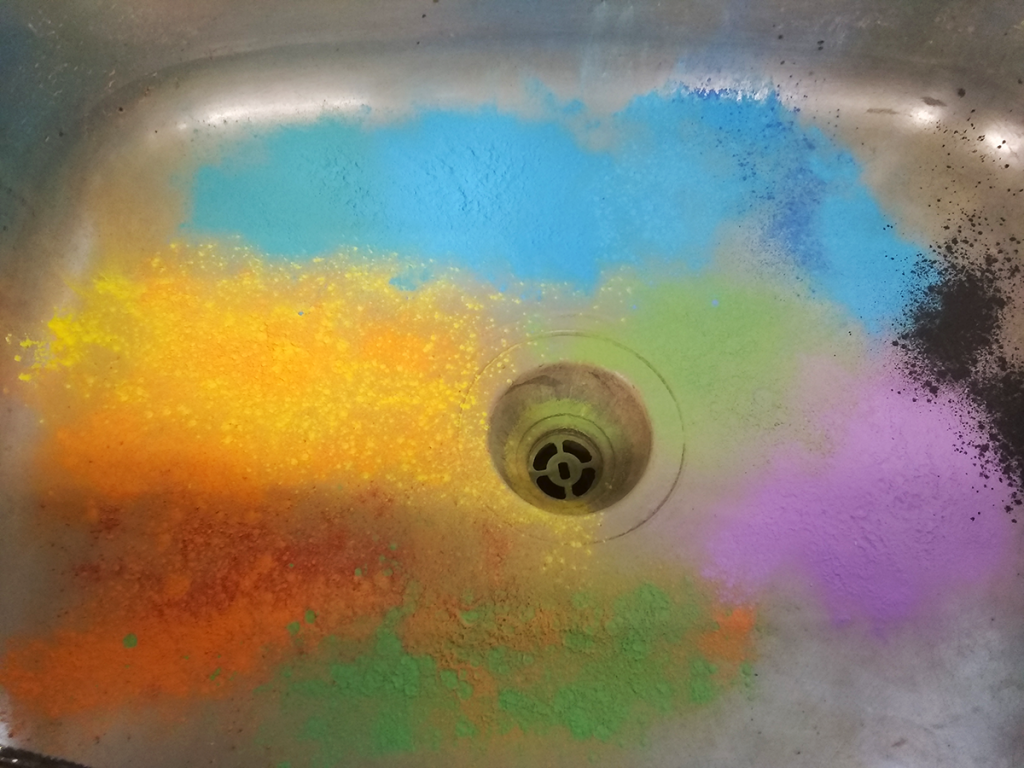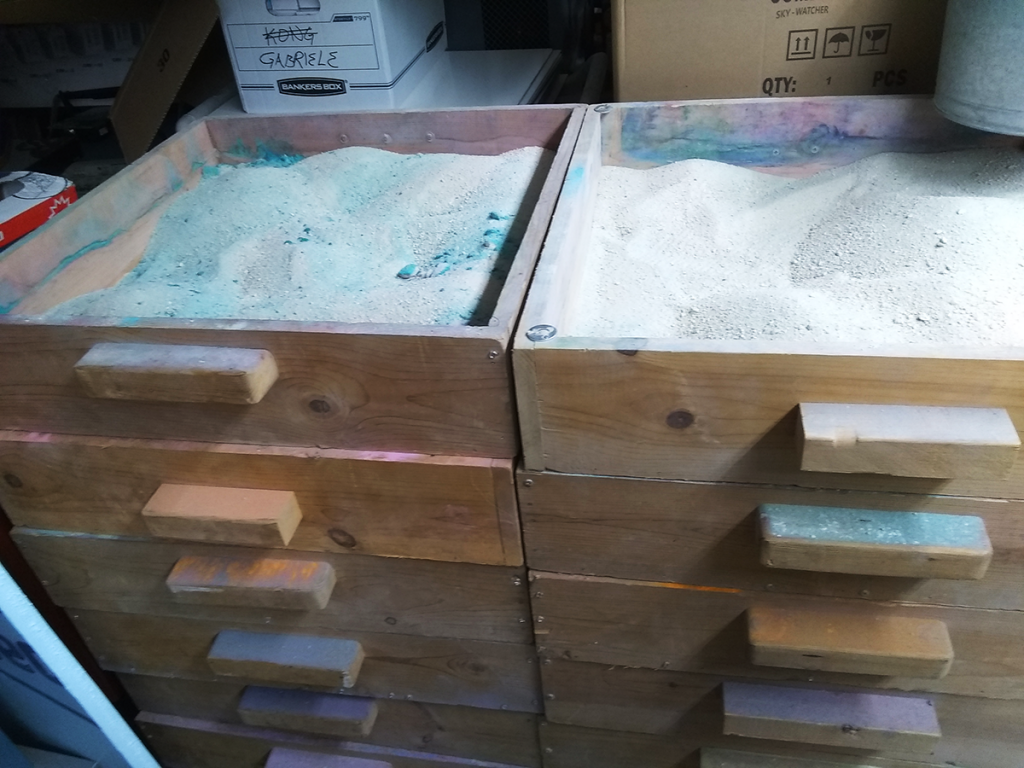
When astronomers study objects they can’t reach, they’re typically limited to visual clues to glean information. Sometimes that’s color variation, like when the ejecta from a crater redistribute layers of rock and soil. Laid down at different times, and made of different materials, the dark and light rings and patches can provide a great deal of insight into how and when a lunar crater formed, for example.
The moon is somewhat less vividly colored than a sink full of tempera paint powder, of course. Electroshock hues make the distinctions easier for the students. We have black, brown, and white in the mix. They work just as well, but never elicit the excited reaction of a brilliant orange or a neon-level magenta.
Intended for mixing your own paint, these are effectively the same as the bright, thick paints in nearly every kids’ art classroom you’ve ever seen. Combined with the play sand, the whole lab starts to smell a little bit like a fun day at preschool.

In the end, it all becomes a smeared, brownish-gray mix of sand, pigment, and the occasional lost marble or ball bearing. That and a room where every horizontal surface has a new layer of fine, fine dust…